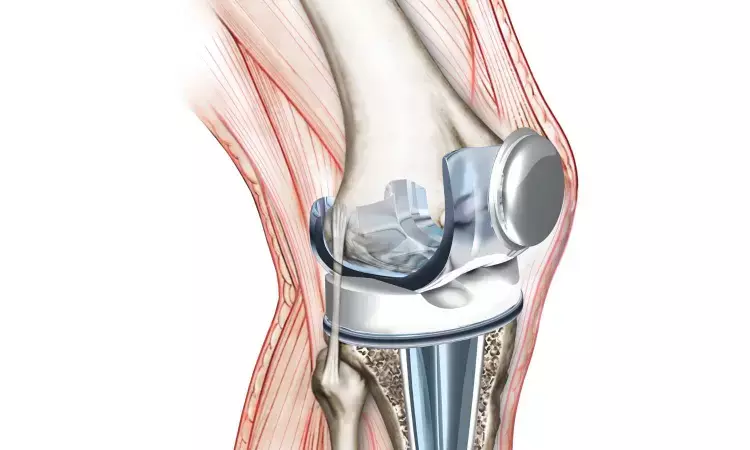- Home
- Medical news & Guidelines
- Anesthesiology
- Cardiology and CTVS
- Critical Care
- Dentistry
- Dermatology
- Diabetes and Endocrinology
- ENT
- Gastroenterology
- Medicine
- Nephrology
- Neurology
- Obstretics-Gynaecology
- Oncology
- Ophthalmology
- Orthopaedics
- Pediatrics-Neonatology
- Psychiatry
- Pulmonology
- Radiology
- Surgery
- Urology
- Laboratory Medicine
- Diet
- Nursing
- Paramedical
- Physiotherapy
- Health news
- Fact Check
- Bone Health Fact Check
- Brain Health Fact Check
- Cancer Related Fact Check
- Child Care Fact Check
- Dental and oral health fact check
- Diabetes and metabolic health fact check
- Diet and Nutrition Fact Check
- Eye and ENT Care Fact Check
- Fitness fact check
- Gut health fact check
- Heart health fact check
- Kidney health fact check
- Medical education fact check
- Men's health fact check
- Respiratory fact check
- Skin and hair care fact check
- Vaccine and Immunization fact check
- Women's health fact check
- AYUSH
- State News
- Andaman and Nicobar Islands
- Andhra Pradesh
- Arunachal Pradesh
- Assam
- Bihar
- Chandigarh
- Chattisgarh
- Dadra and Nagar Haveli
- Daman and Diu
- Delhi
- Goa
- Gujarat
- Haryana
- Himachal Pradesh
- Jammu & Kashmir
- Jharkhand
- Karnataka
- Kerala
- Ladakh
- Lakshadweep
- Madhya Pradesh
- Maharashtra
- Manipur
- Meghalaya
- Mizoram
- Nagaland
- Odisha
- Puducherry
- Punjab
- Rajasthan
- Sikkim
- Tamil Nadu
- Telangana
- Tripura
- Uttar Pradesh
- Uttrakhand
- West Bengal
- Medical Education
- Industry
Low sodium levels before and after total joint replacement linked to adverse outcomes

Patients with low sodium levels before or after total knee or hip arthroplasty are more likely to experience complications and other adverse outcomes, reports a study in The Journal of Bone & Joint Surgery. The journal is published in the Lippincott portfolio in partnership with Wolters Kluwer.
Hyponatremia is an overlooked sign of trouble following total joint arthroplasty (TJA), according to the new research by Javad Parvizi, MD, FRCS, and colleagues of Rothman Orthopaedic Institute at Thomas Jefferson University. They write, "Efforts should be made to evaluate and, if possible, address hyponatremia in the preoperative period."
Large study looks at incidence and impact of hyponatremia after TJA
The researchers analyzed 3,071 primary and revision TJAs performed at their high-volume orthopaedic surgery center between 2015 and 2017. All patients had at least one preoperative and one postoperative sodium measurement. The patients' average age was 67 years, and 54% were women.
In 84.6% of patients, sodium levels were normal both preoperatively and postoperatively. Another 9.4% of patients had normal sodium levels preoperatively but had hyponatremia (serum sodium level <135 milliequivalents per liter) postoperatively; 2.1% had hyponatremia preoperatively but normal sodium levels postoperatively; and 3.8% had hyponatremia both preoperatively and postoperatively. Patients with postoperative hyponatremia were more likely to have a history of congestive heart failure, stroke, liver disease, and chronic kidney disease.
Postoperative hyponatremia was linked to increases in several adverse outcomes-particularly in patients who had low sodium levels both before and after TJA. Patients in this group spent more time in the hospital (average 6.4 days), were more likely to be discharged to a rehabilitation or nursing center rather than home (43%), and were more likely to be readmitted to the hospital within 90 days (18%).
Twofold increase in complications with postoperative hyponatremia
After adjustment for other factors, the risk of a complication was 2.1 times higher among patients who had hyponatremia postoperatively and 2.6 times higher among patients who had hyponatremia both preoperatively and postoperatively.
Patients with postoperative hyponatremia were also more likely to have a non-home discharge (1.7 and 3.0 times higher among those with normal and low preoperative sodium, respectively) and spent more days in the hospital after surgery. Patients with greater decreases in sodium after TJA were at higher risk of each of these adverse outcomes. Hyponatremia was a significant risk factor for patients undergoing both primary and revision TJA.
For patients with preoperative hyponatremia that normalized after TJA, outcomes were similar to those of patients who had normal sodium levels both preoperatively and postoperatively. Counterintuitively, patients with postoperative hyponatremia that was corrected after surgery but before hospital discharge had longer length of stays, and worse outcomes than those who did not have their sodium corrected.
The study adds to previous evidence that hyponatremia is relatively common following TJA and can adversely affect the patients' postoperative course. "[P]atients who develop hyponatremia are likely to stay in the hospital longer and are more likely to experience complications and undergo non-home discharge," Dr. Parvizi and coauthors write. They suggest low serum sodium may be an indicator of poorer general health and low physiological reserve.
"Patients with preoperative and postoperative hyponatremia were particularly at risk," the researchers add. They emphasize the need for further studies to determine whether hydration protocols and other "medical optimization" steps can mitigate the adverse effects of low sodium levels in patients undergoing TJA.
Reference:
Colin M. Baker, Graham S. Goh, Saad Tarabichi, Matthew B. Sherman, Irfan A. Khan, Javad Parvizi, The Journal of Bone and Joint Surgery,DOI: 10.2106/JBJS.22.00928.
Dr Kamal Kant Kohli-MBBS, DTCD- a chest specialist with more than 30 years of practice and a flair for writing clinical articles, Dr Kamal Kant Kohli joined Medical Dialogues as a Chief Editor of Medical News. Besides writing articles, as an editor, he proofreads and verifies all the medical content published on Medical Dialogues including those coming from journals, studies,medical conferences,guidelines etc. Email: drkohli@medicaldialogues.in. Contact no. 011-43720751


